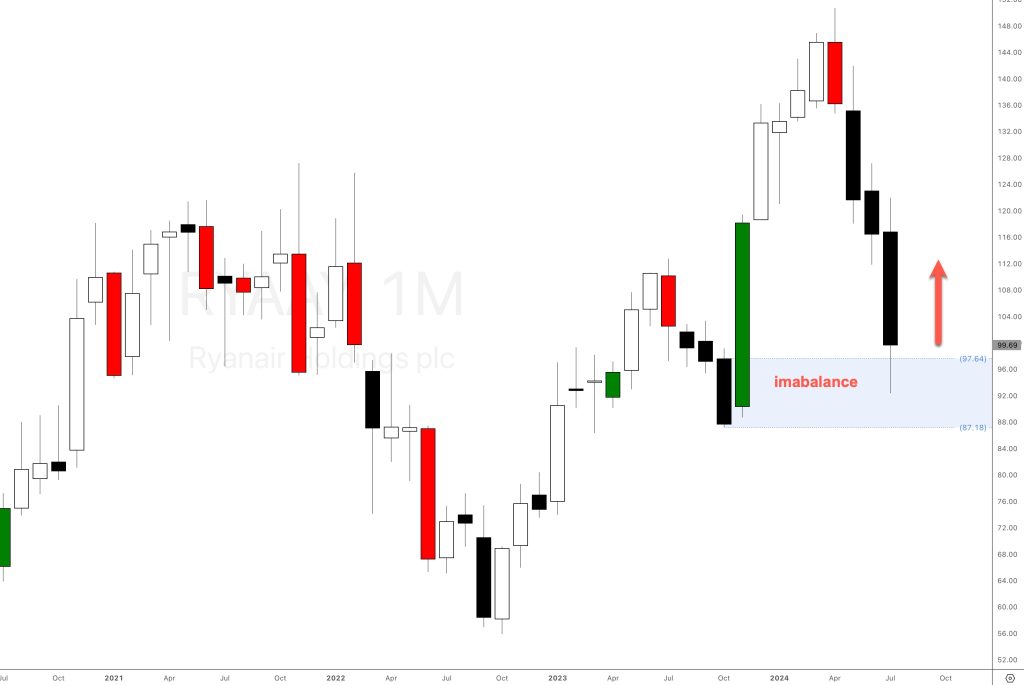30 Jul

As the world emerges from the ashes of travel restrictions and economic uncertainty during COVID-19, airlines are poised for a remarkable comeback. Ryanair stands out as a beacon of opportunity in an ever-evolving aviation landscape. With its low-cost model and agile operational strategies, this budget airline is not just weathering the storm; it’s gearing up for takeoff like never before! In this supply and demand analysis, we’ll dive into the key factors that could send Ryanair stock soaring to new heights—burgeoning travel demand, strategic expansion plans, or evolving consumer preferences. Buckle up as we explore how this industry giant may soon ascend beyond expectations!
Introduction to Ryanair and its stock performance
Ryanair, the low-cost airline that has revolutionized air travel in Europe, has seen its stock performance fluctuate over recent years. As a company known for offering budget-friendly flights, it operates in a highly competitive market. However, signs suggest that Ryanair could be on the brink of something big. With the world slowly recovering from pandemic-induced travel restrictions and people itching to explore again, could we be approaching a demand surge? This is an exciting time for investors as they ponder what factors might propel Ryanair’s stock to new heights.
In this supply and demand stock analysis, I will dive into critical elements influencing consumer behaviour and industry trends that may affect Ryanair’s trajectory. From shifting travel preferences to strategic expansions and competitor dynamics—let’s unpack how these variables intertwine and what they mean for potential growth in Ryanair’s stock value.
Understanding the concept of demand surge
Demand surge refers to a significant increase in demand for goods or services within a short timeframe. This phenomenon often occurs when external factors align, creating a perfect storm for heightened consumer interest. In the travel industry, demand surges can be triggered by various elements, including economic recovery, seasonal trends, and changes in consumer behaviour. For airlines like Ryanair, this means more passengers eager to book flights as restrictions ease and disposable incomes rise.
Moreover, marketing strategies play a crucial role. Effective promotions or partnerships can amplify visibility and attract new customers during peak times.
Understanding these dynamics helps stakeholders make informed pricing strategies and capacity planning decisions. As demand fluctuates, companies must stay agile to seize opportunities arising from sudden interest spikes.
These surges in demand are unrelated to the imbalances between supply and demand that we typically encounter when analyzing a particular stock or asset. The monthly demand imbalance for Ryanair Airlines (NASDAQ: RYAAY) indicates a significant increase in demand, which we anticipate will prompt the low-cost airline company to take action. Will Ryanair Airlines capitalize on this imbalance? We hope so, as there is great profit potential.

Increase in travel demand post-pandemic
The pandemic altered travel patterns drastically, but now there’s a vibrant resurgence. As restrictions ease and vaccination rates rise, people are eager to explore again. Ryanair stands to benefit significantly from this renewed enthusiasm for travel. With pent-up demand driving consumers to book flights, low-cost airlines like Ryanair are well-positioned to capture a larger market share.
Travelers are seeking affordable options as they plan their long-awaited getaways. The appeal of budget airlines is stronger than ever, especially among younger travellers looking for value without compromising on experience.
Moreover, the shift towards spontaneous trips means that last-minute bookings could surge in popularity. This trend favours Ryanair’s business model, which thrives on flexibility and quick adjustments in scheduling. As holidaymakers flock back to airports worldwide, Ryanair’s capacity may quickly fill up – translating directly into increased revenues and potentially boosting stock performance.








